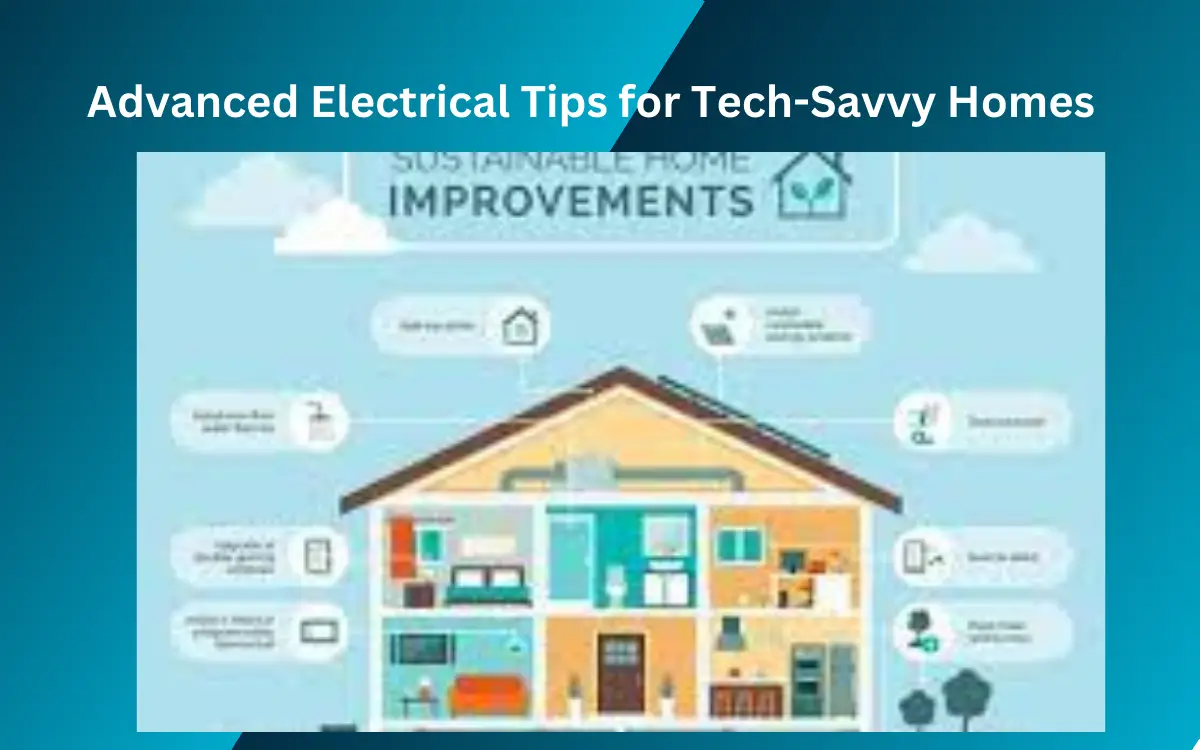Both the environment and your bank account will thank you for your eco-friendly lifestyle choices. Homeowners are seeking for methods to decrease energy usage and save money on energy bills due to rising energy prices and increasing concerns about climate change. With the goal of making sustainable living more than just a dream for households worldwide, this article dives into practical energy efficiency tips that can be easily implemented in every home.
Who Benefits from Energy Efficiency?
Everyone, from homeowners of large detached homes to tenants of small apartments or building managers of multi-unit residential complexes, can benefit from energy efficiency. Any reader, no matter their living situation or financial situation, should be able to implement at least one of the energy-saving measures suggested in this article. Both homeowners and renters can reap the benefits of improved energy efficiency: the former with reduced utility bills and higher property values, and the latter with more comfort and less expense. Energy efficiency is beneficial for individuals and the environment in the long run because it helps achieve environmental goals like lowering emissions of greenhouse gases and preserving natural resources.
Harness the Power of Modern Technology
Invest in Energy-Efficient Appliances
One of the most significant things you can do to make your house greener is to replace old, inefficient appliances with new, energy-efficient ones. Products bearing the Energy Star label have been certified as meeting the stringent requirements for energy efficiency established by the United States Environmental Protection Agency. Appliances that are energy efficient use cutting-edge technology to reduce power consumption without compromising performance, resulting in long-term cost savings on energy bills.
Adopt Smart Home Devices
An easy way to improve energy efficiency is with smart home technology. Smart thermostats and similar devices can learn your routine and preferences and then optimize energy consumption by adjusting the heating and cooling of your home automatically. By enabling remote control of smart plugs and lights, you can minimize energy consumption by turning off appliances and lights even when you’re not at home.
Utilize Renewable Energy Sources
One way to lessen one’s impact on the environment and cut down on energy costs is to install renewable energy sources like solar panels on one’s home. Many homeowners are considering solar energy as a way to reduce their carbon footprint and achieve energy independence because it has grown more accessible and affordable.
Embrace Low-Flow Fixtures
A large portion of a typical household’s energy budget goes toward heating water. To save energy, install low-flow showerheads and faucets to reduce hot water usage. By reducing the water flow rate without sacrificing performance, these fixtures allow you to save water and energy without sacrificing a satisfying shower experience.
Optimize Heating and Cooling Systems
Seal Drafts and Insulate Your Home
To keep the inside at a pleasant temperature and cut down on energy waste, it is essential to insulate well and seal any drafts. Inspect all openings, such as windows, doors, and the space around them, for draughts. If you use weatherstripping or caulk to seal these cracks, the air conditioning and heating systems in your home will work more efficiently.
Schedule Regular HVAC Maintenance
Keeping up with HVAC system maintenance is key to keeping your system running efficiently. Filters need to be cleaned or replaced, duct leaks must be checked, and the system must be calibrated correctly. The efficiency and longevity of an HVAC system are both enhanced by regular maintenance.
Upgrade to Programmable Thermostats
Your home’s energy consumption can be greatly reduced with a programmable thermostat, as previously stated. You won’t have to worry about wasting energy heating or cooling a house when these devices adjust the temperature automatically according to your schedule. You can have even more control over your energy use with modern programmable thermostats that can be adjusted remotely through smartphone.
Utilize Natural Ventilation
Use open windows and doors to let fresh air into your home whenever you can. You can get more fresh air in and less hot air out by opening the windows at cooler times of day or night. This will help keep your air conditioner running more efficiently. This works wonders in places where the nighttime lows are very high.
Adopt Sustainable Living Practices
Reduce, Reuse, Recycle
The three Rs: reduce, reuse, recycle are the pillars upon which sustainable lifestyles rest. Waste can be reduced and resources can be conserved by reducing consumption, reusing items, and recycling materials whenever possible. Being conscious of your consumption habits and seeking out ways to use less can also be applied to energy use with this mindset.
Support Local and Sustainable Products
Picking products made in a sustainable way or from nearby sources can help lessen the impact on the environment from transportation and manufacturing. This goes beyond just food and clothes; it can also include energy sources, like joining a community solar program if getting solar panels installed on your own is out of the question.
Foster Green Spaces
Improving air quality and adding personal satisfaction can be achieved through the creation of green spaces, whether it’s a garden in your backyard or houseplants. Plants purify the air both inside and outside your house by absorbing carbon dioxide and releasing oxygen.
Engage in Community Initiatives
You can have an even greater effect by getting involved in local environmental programs or energy-saving projects. Workshops, incentives, and resources are available in many communities for residents who want to live greener lives. Participation in these programs has positive effects on people’s lives as well as on the environment and community resilience.
Maximize Energy Savings with Lighting Solutions
Switch to LED Lighting
Switching out incandescent and halogen light bulbs for LED (Light Emitting Diode) ones is a simple and effective approach to lower your home’s energy usage. Long-lasting and significantly more energy-efficient than incandescent and halogen light bulbs, LEDs can cut power consumption by as much as 90% and eliminate the need for frequent bulb replacements. In addition to reducing energy consumption, this switch also drastically lowers lighting expenses in the long run.
Harness Natural Daylight
Significant energy savings can be achieved by making the most of natural light during the day and significantly reducing the need for artificial lighting. To bring more light into rooms that are otherwise dark, try hanging lighter-colored curtains or roller blinds and installing skylights or bigger windows in those rooms. Another way to make your home brighter without using more energy is to strategically place mirrors, which reflect and amplify natural light.
Use Lighting Controls
You can take your home’s energy efficiency to the next level by installing lighting controls such as timers, motion sensors, and dimmers. With a dimmer, you can control the light intensity to your liking, reducing power consumption when it’s not needed. You can set lights to turn off after a certain amount of time to avoid leaving them on when they aren’t needed, and motion detectors can make lights turn on only when someone is in the room, cutting down on energy waste in empty rooms.
Optimize Outdoor Lighting
We recommend looking into solar-powered lights and LED alternatives for outdoor lighting. An eco-friendly and economical way to light up pathways, gardens, and other outdoor spaces are solar lights, which draw their energy directly from the sun. To further reduce energy waste, install timers or motion sensors to turn off outdoor lighting when it is not needed.
Improve Water Heating Efficiency
Lower Water Heater Temperature
Reduce your water heater’s energy consumption by setting it to a lower temperature. Water heaters typically work best when set to 120°F (approximately 49°C), which is more than enough for most people’s daily needs without scalding and uses less energy than higher settings.
Insulate Your Water Heater
You can keep the water hot for longer without using as much energy from the heater if you insulate the pipes that carry hot water and the water heater itself. You can enhance energy efficiency and see a marked decrease in your energy bill with this easy upgrade.
Consider Tankless Water Heaters
Less energy is wasted when water is heated directly without using a storage tank with tankless or on-demand water heaters. For households with a daily hot water consumption of less than 41 gallons, they can prove to be more energy efficient than conventional tank water heaters. Tankless water heaters may not be the cheapest option, but they can end up saving you money on energy bills in the long run.
Choose Energy-Efficient Water Heating Solutions
You can save money and help the environment in the long run by looking into other options for heating water, like solar water heaters or heat pump water heaters. Reducing reliance on fossil fuels and energy costs, these systems heat water using renewable energy sources or more efficient technologies.
FAQs
Q1: How can I quickly reduce my energy bill?
A1: A few simple things you can do right now to lower your energy bill include replacing incandescent light bulbs with LEDs, caulking around doors and windows, and adjusting the temperature on your thermostat.
Q2: Are energy-efficient appliances worth the investment?
A2: You can save money on your energy bills in the long run by investing in energy-efficient appliances.
Q3: Can smart thermostats really save energy?
A3: You can save money on heating and cooling by installing a smart thermostat, which adjusts the temperature in your home according to your routines and preferences.
Q4: What is the best way to insulate my home?
A4: Depending on your home’s condition, the best way to insulate it involves adding insulation to the attic, walls, and floors as well as sealing any leaks around the windows and doors.
Q5: How does reducing water usage save energy?
A5: Cutting back on water use reduces the amount of energy required to heat water, which in turn reduces your home’s total energy consumption and utility bills.
Conclusion
In conclusion, there are many paths to a more energy-efficient home, including the installation of new systems, upgrades to existing ones, and modifications to everyday routines. You can help create a more sustainable and eco-friendly world while saving money on utility bills and cutting down on energy consumption by following these steps. Every homeowner has the power to make a difference in the environment, and improving energy efficiency is just the beginning.

Shannon Reyes is a seasoned writer with a knack for crafting engaging blogs on a variety of service industries, including plumbing, cleansing, moving, pest control, and roofing. With a keen eye for detail and a passion for helping readers navigate complex topics, Shannon brings her expertise to life through informative and accessible content.










